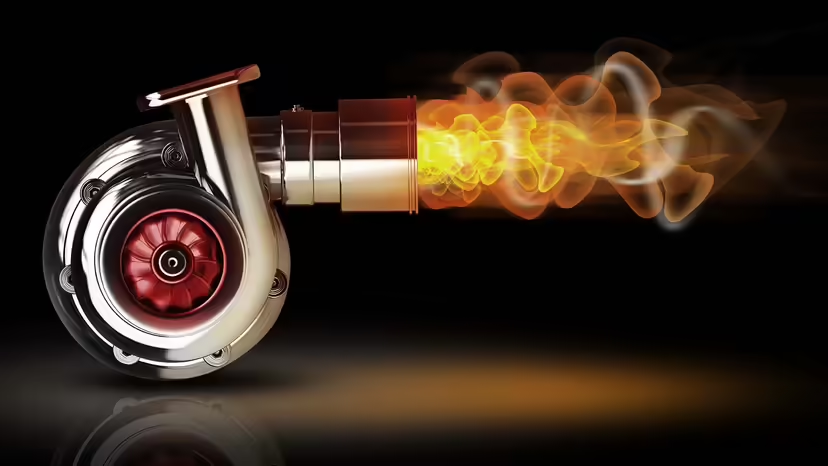When it comes to boosting engine performance, the term “turbo” is often at the forefront of the conversation. But what exactly is a turbo, how does it work, and why is it so popular in the automotive and tech industries? In this comprehensive guide, we’ll explore everything you need to know about turbos, their benefits, applications, and much more.
What is a Turbo?
A turbo, short for turbocharger, is a device that forces more air into an engine’s combustion chamber. By increasing the air intake, a turbo allows the engine to burn more fuel, resulting in greater power output. Turbos are widely used in cars, trucks, and even airplanes to enhance performance and efficiency.
How Does a Turbo Work?
A turbocharger operates using the following components:
- Compressor Wheel: Draws in and compresses air.
- Turbine Wheel: Powered by exhaust gases, it drives the compressor wheel.
- Intercooler: Cools the compressed air before it enters the engine.
- Wastegate: Regulates the amount of exhaust gas entering the turbine.
Step-by-Step Process:
- Exhaust gases from the engine spin the turbine wheel.
- The turbine wheel powers the compressor wheel.
- The compressor wheel draws in and compresses air.
- Compressed air is cooled by the intercooler and sent to the engine.
- The engine burns the air-fuel mixture more efficiently, producing more power.
Benefits of Using a Turbo
Turbos offer several advantages, making them a popular choice for both performance enthusiasts and eco-conscious drivers:
- Increased Power: Turbos can significantly boost engine horsepower.
- Improved Fuel Efficiency: By optimizing combustion, turbos help engines use fuel more efficiently.
- Reduced Emissions: Modern turbos contribute to cleaner exhaust gases.
- Compact Design: Turbos allow smaller engines to deliver the power of larger ones.
Types of Turbochargers
There are several types of turbochargers, each designed for specific applications:
| Type | Description |
|---|---|
| Single Turbo | The most common type, ideal for small to medium-sized engines. |
| Twin-Turbo | Uses two turbos for better performance at different RPM ranges. |
| Variable Geometry | Adjusts the angle of the turbine blades for optimal performance at all speeds. |
| Electric Turbo | Powered by electricity, offering instant boost without lag. |
Applications of Turbochargers
Turbos are not limited to cars. They are used in various industries, including:
- Automotive: Sports cars, trucks, and SUVs.
- Aerospace: Aircraft engines for higher altitude performance.
- Marine: Boats and ships for increased power and fuel efficiency.
- Industrial: Power generators and heavy machinery.
Common Turbo Issues and Maintenance Tips
While turbos are highly efficient, they require proper care to function optimally. Here are some common issues and maintenance tips:
Common Issues:
- Turbo Lag: A delay in power delivery.
- Overheating: Caused by excessive use or poor cooling.
- Oil Leaks: Can damage the turbo and engine.
Maintenance Tips:
- Use high-quality engine oil.
- Allow the engine to cool down after driving.
- Regularly inspect and clean the turbo components.
For more detailed maintenance tips, visit our Turbo Maintenance Guide.
Turbo vs. Supercharger: What’s the Difference?
Both turbos and superchargers are designed to boost engine performance, but they operate differently. Here’s a quick comparison:
| Feature | Turbo | Supercharger |
|---|---|---|
| Power Source | Exhaust gases | Engine belt or crankshaft |
| Efficiency | More fuel-efficient | Less fuel-efficient |
| Lag | May experience turbo lag | Instant power delivery |
| Cost | Generally more affordable | Typically more expensive |
The Future of Turbo Technology
As technology advances, turbos are becoming more efficient and versatile. Innovations like electric turbos and hybrid systems are paving the way for a greener, more powerful future. These advancements are not only improving performance but also reducing environmental impact.
Why Choose TurboTechify for All Things Turbo?
At TurboTechify, we are passionate about turbo technology. Whether you’re looking for the latest turbochargers, maintenance tips, or industry news, we’ve got you covered. Explore our wide range of resources and products to take your turbo knowledge to the next level.
Check out our Turbo Products for the best deals and expert recommendations.
FAQs About Turbos
1. What is turbo lag?
Turbo lag is the delay between pressing the accelerator and the turbo delivering power. It occurs because the turbo needs time to spool up.
2. Can I install a turbo on any car?
While it’s possible to install a turbo on most cars, it requires significant modifications and expertise.
3. How long does a turbo last?
With proper maintenance, a turbo can last over 100,000 miles.
4. Are turbos bad for the environment?
Modern turbos are designed to reduce emissions, making them more eco-friendly than older models.
Conclusion
Turbochargers are a game-changer in the world of engines, offering unmatched power, efficiency, and versatility. Whether you’re a car enthusiast or a tech-savvy individual, understanding turbos can help you make informed decisions about performance upgrades and maintenance.
For more insights, tips, and products, visit TurboTechify today!

